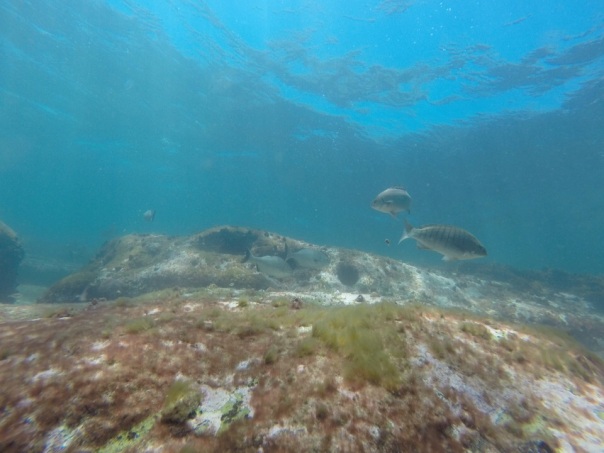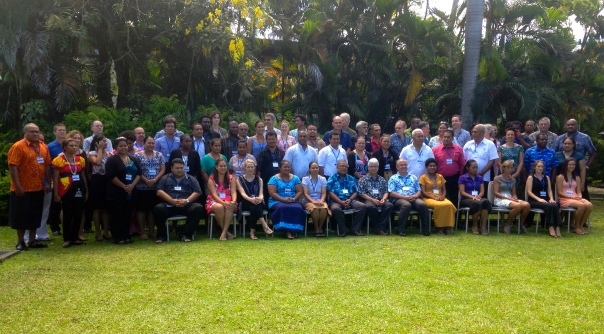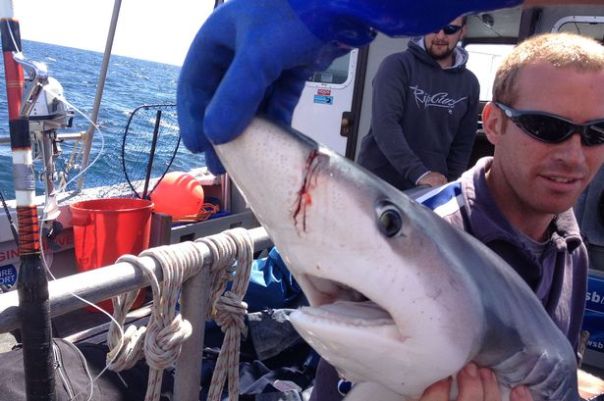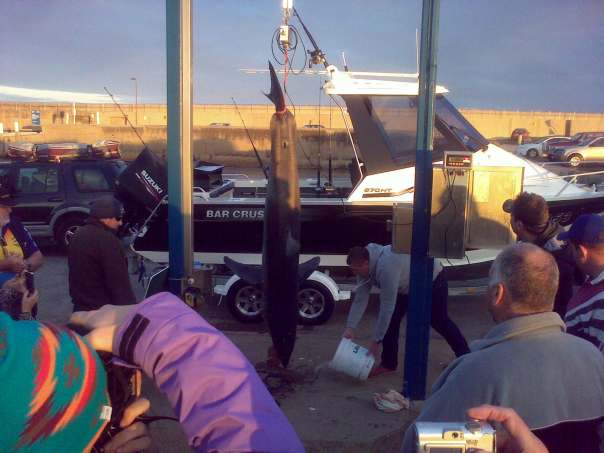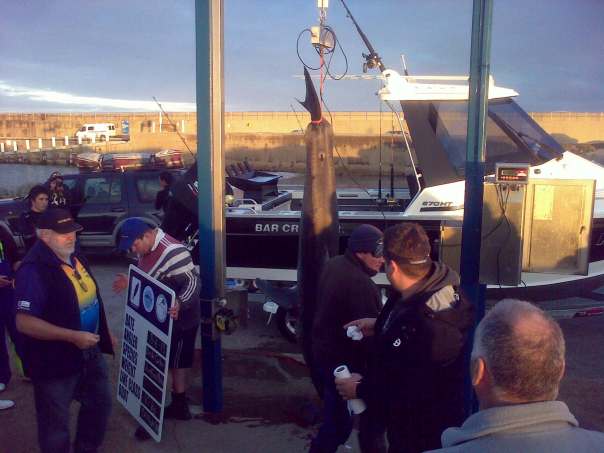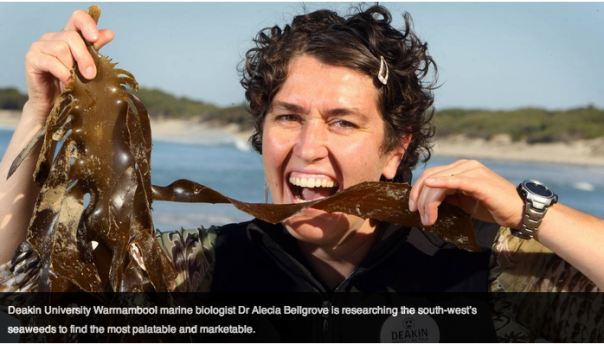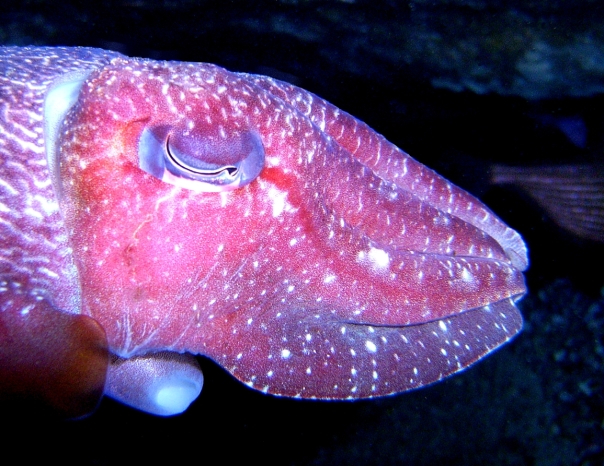Blog Archives
COP21 – the world weighs in
The Paris terrorist attacks weighed pretty heavily on the attendees of COP21 and tightened security around the venues, resulting in protest marches being banned and the unusual sight of shoes in place of marchers.
Conservationists, as expected, took to social media to get in on the conversations denied after being shut out of the French capital and the UN Climate Talks Live Feed gives a great rundown of the discussions from various levels from negotiators to participants and media around the event.
Check out the Civil Society Representatives feed for one – doesn’t include some of the expected organisations and it’s a concern to see climate change skeptic Bjorn Lomberg and downright tool in the top three posters today (Monday 30 November).
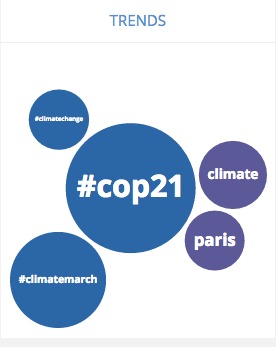
#WorldParksCongress wraps up #WPCMarine
I worked some of the longest days of my career at World Parks Congress and dealt with a variety of event teething issues never experienced before. On the upside, I met some amazing people (including the wonderful Sylvia Earle, who I interviewed for our webtv channel) and worked with a great team from the French Marine Protected Areas Agency. Please make sure you check out our videos at http://oceanplus.tv/en/
Oceanic microplastics: the implications of tiny pollution
My classmate Dom Lawler deserves most of the credit for producing this video on microplastics, made in less than four days using iMovie for a university assignment on aquatic pollution.
Check the film out and watch some other related one on YouTube if it sparks your interest.
Here’s some quick details on the plastic pollution issue:
– 10% of the 280 million tonnes of plastic produced annually worldwide ends up in the ocean, contributing to 60−80% of all marine debris (Kaposi et al. 2014)
– First reports of plastic litter in the ocean were in the 1970s (Andrady 2011)
– Plastics could take centuries to completely mineralise or biodegrade (Moore 2008)
– 10% of all static fishing gear – including plastic nets, fishing line and ropes – is lost worldwide (FAO 1991)
– In the environmental context, microplastics are regarded as pieces of plastic debris less than 5mm in size
– Studies have found that 267 species of marine organisms worldwide are known to have been affected by plastic debris, a number that will increase as smaller organisms are assessed. (Moore 2008)
References (and other useful video sources)
Plastic Oceans, broadcast on Catalyst, ABC TV1, 6 September 2012:
http://www.abc.net.au/catalyst/stories/3583576.htm
Plankton film clip: Ren Kyst, Norway www.facebook.com/RenKystFilm
Plastic planet: www.natracare.com/sisters http://youtu.be/73sGgmZoMBQ
FAO (Food and Agriculture Organization), Canada, 1991. In: Smith, A. (Ed.), Report of the Expert Consultation on the Marking of Fishing Gear, Victoria, British Columbia, Canada, 14–19 July, 1991.
Moore, CJ 2008, ‘Synthetic polymers in the marine environment: A rapidly increasing, long-term threat’, Environmental Research, vol. 108, no. 2, pp. 131-9.
Andrady, AL 2011, ‘Microplastics in the marine environment’, Marine Pollution Bulletin, vol. 62, no. 8, pp. 1596-605.
Kaposi, KL, Mos, B, Kelaher, BP & Dworjanyn, SA 2014, ‘Ingestion of microplastic has limited impact on a marine larva’, Environmental Science and Technology, vol. 48, no. 3, pp. 1638-45.
Predicting mining impacts on deep sea communities
The complex and little-understood nature of deep sea biological communities needs to be further researched before any deep sea mining licenses are granted in the Central and West Pacific.
Speakers at the 4th Regional Training Workshop: Environmental Perspectives of Deep Sea Mineral Activities in Nadi, Fiji, discussed the potential commercial value of deep sea minerals and the expensive but vital research that should be continued to determine the impacts of mining on abyssal plain, seamount and hydrothermal vent communities.
The four-day workshop, organised by the Secretariat of the Pacific Regional Environment Programme (SPREP) and the Secretariat of the Pacific Community (SPC), aims to build on the work undertaken by the SPC-EU Deep Sea Minerals Project to strengthen governance systems in Pacific Island countries and territories to manage and minimise environmental impacts from mining activities.
Mining companies have yet to start any mining operation in the deep sea but are exploring several zones in the Central and West Pacific, searching for rich deposits of manganese nodules, cobalt-rich crusts and seafloor massive sulphides.
Duke University Marine Laboratory director Professor Cindy Van Dover, who has piloted the Alvin submersible to assess deep sea environments, said mining operations could have potentially long-term impacts on the fish, molluscs, sponge and worm communities of the deep sea.
“A single mining event could have the same impact as a volcanic eruption and it would be no big deal. Multiple events would be different,” she said.
“Hydrothermal vents are likely to be more resilient than anything else … but there’s still potential for things to go wrong.”
Prof Dover said hydrothermal vents, a key target for seafloor massive sulphide mining, were also being utilised for their genetic resources to develop medical, pharmaceutical, cosmetic and therapeutic products.
Dr Malcolm Clark, Principal Scientist at New Zealand’s National Institute of Water and Atmospheric Research (NIWA), said the faunal communities in manganese nodule and cobalt-rich crust environments were very different and mining operations should build in large buffer zones to reduce impacts.
Professor Mike Petterson, director of SPC’s Applied Geoscience and Technology Division (SOPAC), also launched the SPC-UNEP/GRID-Arendal Pacific Marine Minerals Assessment Report and presented Mr Samuela Namosimalua, Permanent Secretary, Fijian Ministry of Local Government and Environment, with copies of the report.
More information on the SPC-EU Deep Sea Minerals Project is available at
A mild recovery: bluefin tuna stocks may be on the rise
After decades of falling stocks of northern (NBT) and southern bluefin tuna (SBT) in fisheries globally, some possible good news: stocks in certain areas appear to be on the rise, according to this Oceana report on a recent ICCAT Standing Committee on Research and Statistics meeting.
I feel like I should automatically qualify that by skipping to the third paragraph of Oceana’s post, which stated:
Scientists say that the models (SCRS is) using are flawed and therefore have little confidence in them, so they will spend 2014 working with more recent data and improving their calculations.
Which makes me think of this piece of gold from 30 Rock:
Just like They Might Be Giants’ Dr Worm, Dr Leo Spaceman is not a ‘real’ doctor but he comes up with some very apt quotes that show how people can trust an academic or medical professional just because they “know science”.
Anyway, some fisheries managers and tuna fishers will be pretty excited about the possible stock rebound but hopefully they’ll err on the side of caution before making any changes to quotas. Here’s some research I put together for a uni report that might shed some light on the Antipodean situation:
“Australia’s SBT catch peaked at 21,500 tonnes in 1982 (Farley, J. H. et al. 2007) and quotas established in 1989 restricted the catch to 5265 tonnes annually.
Japanese long-lining catch peaked at 78,000 tonnes in 1961 and quotas were also introduced to restrict Japan to 6065 tonnes annually.
Illegal, unreported and unregulated fishing for the species is also a major concern with the Commission for the Conservation of Southern Bluefin Tuna finding that ‘substantial and continuous unreported catches of SBT had been taken by longline vessels since at least the early 1990s’ (Polacheck 2012).”
That’s just the Australian and Japanese reported data for SBT – areas of the New Zealand and South African coast are also key fishing grounds, as well as the international waters where self-reporting of catches is still a woefully inadequate system.
In my opinion, we need tougher quotas, not leniency for these ocean hunters.
1. Farley, JH, Davis, TLO, Gunn, JS, Clear, NP & Preece, AL 2007, ‘Demographic patterns of southern bluefin tuna, Thunnus maccoyii, as inferred from direct age data’, Fisheries Research, vol. 83, no. 2-3, pp. 151-61.
2. Polacheck, T 2012, ‘Assessment of IUU fishing for Southern Bluefin Tuna’, Marine Policy, vol. 36, no. 5, pp. 1150-65.
Blue shark attacked by Jaws! Ok, not Jaws but still…
Another one from the “Overhyped Shark Attack” Files, this one is a little more unusual than the common ‘Jaws bites man/woman/pet pitbull’ stories.
Bastion of truth and journalistic excellence*, UK’s Daily Mirror had this report on a blue shark caught by fishermen off Cornwall with reasonably small bite marks sustained by a “10 foot” shark of some description…
Supposed experts are said to be looking into the attack, which happened when one of the fishos hooked a 60lb blue shark and then watched a larger shark – thought to be a great white – takes bites out of the blue before they could pull their catch onboard.
The reporter makes the surprising mention that “Although it usually eats other sea creatures, it attacks between five and 10 humans a year around the world and has killed 29 since 1990.”
Many gossip rags don’t usually admit that white sharks are ravenous for human flesh, so this is a big admission for a tabloid.
More from the fisherman who snagged it:
“The blue shark looked like someone had taken a machete to it.
“There’s nothing round here that can do that sort of damage. I sent the pictures to a shark expert and he believes it could well be a great white.”
Well, that’s sorted then: if an ‘expert’ says so, great white it is! But probably not. Great whites can roam vast distances and aspects such as climate change-affected ocean currents or shortage of food (i.e. seals, not people) may have encouraged one closer to the UK southern coast.
Without more confirmed sightings and review by real experts, we’ll have to wave this off as a poorly-identified mako attacking a small bluey and leave it at that.
*For those not aware of sarcasm, this is a relatively straightforward example. The Mirror sits slightly above other UK papers The Sun and the defunct News of the World for integrity and believability.
Japan still misses point on whale, doplhin and shark conservation
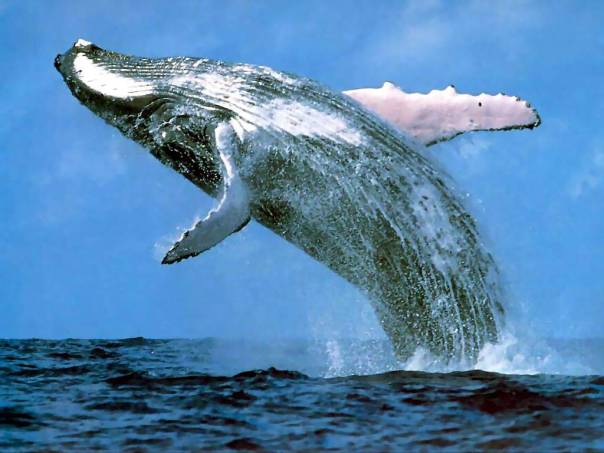
A very small section of Japanese society would like to eat this guy. Photo: http://www.capelodge.com.au
Like many who care about the fate of some of the world’s biggest marine creatures, I’ve been watching in disbelief at the farcical arguments being thrown around at the International Court of Justice over the past two weeks.
Australia is aiming, through the ICJ, to prove that Japan’s Southern Ocean JARPA program is actually a commercial operation.
But, just as Japan has done at CITES and various other major environmental meetings, they couldn’t let commonsense and good legal arguments cloud their representations.
Just look at Japan’s greatest hits from one day of the ‘trial’, (story appeared in Wednesday’s Guardian)
“Japan insists lethal research is both lawful and necessary”
Tokyo was seeking “scientific information on the basis of which Japan might be able to ask for the moratorium [on commercial whaling] to be lifted”
Japan itself had reason to be offended by Australia’s “factual misrepresentations and … misleading use of selective references and quotes”, Tsuruoka said.
The Japanese government told the UN’s top judicial body it was a court of law, not a “medieval inquisition”
I think Japan may have been feeling like this:

I think this is a ‘medieval inquisition’, which looks very unlike the ICJ courtroom
Photo: morriscourse.com
But after all the nonsense arguments from Japan, they still missed the point: ‘After the hearing, government spokesman Noriyuki Shikata told AAP that Japan was content with its “powerful case”.’
I’m no lawyer but a “powerful case” in this arena would seem to be one based on watertight arguments and sound scientific backing and hopefully support from other countries who have proven strong environmental consciousness. Not from those with commercial whaling programs and vested interests in keeping the dream alive for their kids who one day will get to harpoon whales, just like their parents.
Carl Safina, in the Huffington Post, wrote about a similar situation at the CITES meeting in March, where Japan and China were fighting to keep endangered sharks… well, off the endangered list:
… Because Japanese and Chinese delegates are applying intense pressure (read: $) on certain poor countries in Africa and elsewhere to reverse their votes. Japan always does this, bribing countries with aid packages or even individual delegates with cash. And so, a week that has started with a monumental decision for sharks may conclude with another black eye for shark conservation and for CITES.
At least these countries weren’t successful, this time:
Delegates at the triennial meeting in Bangkok of the Convention on International Trade in Endangered Species of Wild Fauna adopted the proposals to put the oceanic whitetip, hammerhead and porbeagle sharks on a list of species whose trade is closely controlled.
More than two dozen species of shark are officially endangered, and more than 100 others considered either vulnerable or near threatened. Like manta rays, sharks are seen as valuable to nations with dive tourism industries, with island territories such as the Bahamas, Fiji and the Maldives deriving major benefits. Eleven nations, including Brazil, the U.S. and Egypt, proposed regulating trade in the species.
The oceanic whitetip proposal passed in a secret ballot with 92 votes in favor, 42 against and 8 abstentions, while the hammerhead proposal passed with 91 votes in favor and 39 against. The porbeagle proposal was adopted with 93 votes in favor, 39 against and 8 abstentions.
It seems that international trade and foreign relations plays a big part in whether a country feels safe to denounce the whaling or shark and dolphin hunting activities of another.
Australia is a key market for Japanese cars and gadgets and they provide vast tourism dollars and a market for our grain, beef and raw materials so there is some financial risk here (but you could safely say, not as big a risk as the Sea Shepherd crews have been taking each summer during Antarctic whaling season).
Economic sanctions by Japan could potentially hurt our economy but if other countries step up and support Australia’s position at the ICJ, it could help Japan to change its position on whales, sharks and dolphins and become active in seeking their protection.
Mako shark still seen as trophy fish for local club competition
I was walking with my favourite Park Ranger yesterday on our usual wander near the Warrnambool Breakwater (the long stone wall in the background of these shots) and noticed a crowd around the weigh-in scales.
At first I thought one of the local tuna fishermen had hoisted up a decent fish for the benefit of tourists (who usually don’t appreciate the plight of the southern bluefin, but that’s another story). On making a path through the onlookers, my partner and I were pretty horrified to see a 110kg mako shark on the scale and a few impressed fishermen boasting about the catch.
Of course fishing for various shark species such as mako (Isurus oxyrinchus) and gummy (Mustelus antarcticus) is still legal in Australia (limits vary by state and territory) but hearing one fishermen state this was a “common shark in these waters” made me cringe: they are still heavily fished and listed as Vulnerable on the IUCN Red List.
Hanging one up in front of a crowd helps continue the “man vs shark” stereotype that is continuing to push down shark numbers worldwide, whether for commercial or recreational purposes. Sizing up the shark when it’s caught, using circle hooks and operating on a catch-and-release basis is the only way to go for maintaining healthy shark populations.
Seaweed passion leads to crowd-funding research
Followers of education writing and/or interested in crowdfunding stories may have noticed this one pop up this week: a university academic, Dr Alecia Bellgrove, who is raising money to fund research into edible seaweeds growing along the Victorian southwest coast.
She happens to be one of my Deakin marine biology lecturers (who I plan to interview on this topic as it heads closer to its funding target) and here’s a brief explanation of the research:
At a time when over 60% of adults and 25% of children in Australia are obese or overweight and the world is experiencing an unprecedented increase in atmospheric CO2 and associated climate change, there is compelling evidence from both the health and sustainability literature that seaweeds should become a common part of global diets.
Seaweeds are incredibly nutritious and can significantly reduce obesity and associated illnesses. Regular consumption of seaweeds thus has the potential to enhance the health of societies now, and for generations to come.
Seaweeds are incredibly efficient at photosynthesising and have amongst the highest rates of carbon fixation per unit area of any plants on the globe. The production of seaweeds for food and other commercial applications thus represents part of a viable solution for climate-change mitigation without compromising the availability of agricultural land and water resources into the future.
Southern Australia has the highest diversity of seaweeds globally with approximately 70% endemic to this region. The unique diversity of seaweeds on our shores represents a treasure chest of potential health and pharmaceutical benefits waiting to be opened. “But seaweed? Does it really taste any good?” I hear you ask. Well, millions of people in Asia think so; but this is a great question, and really important to assess when we are talking about the potential for new food products from the Australian marine flora.______________________________
Aims
With the $5250 requested we will be able to assess the taste preference of local (Victorian) seaweeds compared with seaweed from other parts of the world. We will do this by recruiting tasters and then cooking up a storm of local and imported seaweed delights to tempt their taste-buds. Funds will be used to lease a commercial kitchen, purchase ingredients and pay a research assistant to assist with the data collation.______________________________
Future Possibilities
There are also other important aspects to consider such as the nutritional value of the seaweeds and ecological sustainability of harvesting.
With additional funding beyond that requested we can also
1) examine the nutritional quality of local seaweeds, with comparisons to commercially available species and
2) estimate the local biomass of high-value, edible seaweeds and prospects for sustainable harvesting of wild populations.______________________________
Keep informed
You can follow us on Facebook : http://www.facebook.com/Wouldyoulikeseaweed
And on Twitter: @DeakinSeaweed and @Deakinsensory
Inventing a new species, one misspelling at a time
Having a quick browse over my Twitter feed this morning, the word-nerd in me spotted this:
Ok, so Revolution may have been training up a new intern with poor English literacy but to get both of these wrong when you’re promoting an environmental documentary seems a bit absurd.
Just to check, I googled “cuddlefish” and it’s either a children’s swimwear brand, an Australian music group or a fictional US rock band on the iCarly TV series, none of which I’ve ever heard of…
As for “flambouyant”, Urban Dictionary defines it as “something very flambouyant/colourful/gay”. Which doesn’t really help when the word you’re using is in the definition but I guess cuttlefish are colourful (unless they decide to hide against a grey, light green or brown backdrop, when they just blend in).
Does this guy below qualify as cuddly or flambouyant? (The word-nerd again, hating having to spell that wrong!)


